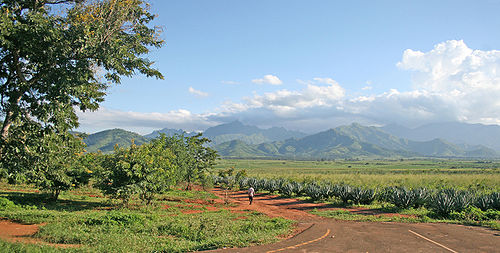Sisalnoun
A Central American plant, Agave sisalana, cultivated for its sword-shaped leaves that yield fibers used for rope.
Sisalnoun
The fibre of the plant.
Sisalnoun
(rare) A sisal mat.
Sisalnoun
a plant fiber used for making rope
Sisalnoun
Mexican or West Indian plant with large fleshy leaves yielding a stiff fiber used in e.g. rope
Sisal
Sisal (, Spanish: [siˈsal]), with the botanical name Agave sisalana, is a species of flowering plant native to southern Mexico but widely cultivated and naturalized in many other countries. It yields a stiff fibre used in making rope and various other products.
Jutenoun
The coarse, strong fiber of the East Indian plant, Corchorus olitorius, used to make mats, paper, gunny cloth etc.
Jutenoun
The plants from which this fibre is obtained.
Jutenoun
The coarse, strong fiber of the East Indian Corchorus olitorius, and Corchorus capsularis; also, the plant itself. The fiber is much used for making mats, gunny cloth, cordage, hangings, paper, etc.
Jutenoun
a plant fiber used in making rope or sacks
Jutenoun
a member of a Germanic people who conquered England and merged with the Angles and Saxons to become Anglo-Saxons
Jutenoun
a member of a Germanic people that (according to Bede) joined the Angles and Saxons in invading Britain in the 5th century, settling in a region including Kent and the Isle of Wight. They may have come from Jutland.
Jute
Jute is a long, soft, shiny bast fiber that can be spun into coarse, strong threads. It is produced from flowering plants in the genus Corchorus, which is in the mallow family Malvaceae.

















